How Japan Beat the World With All-Wheel Drive
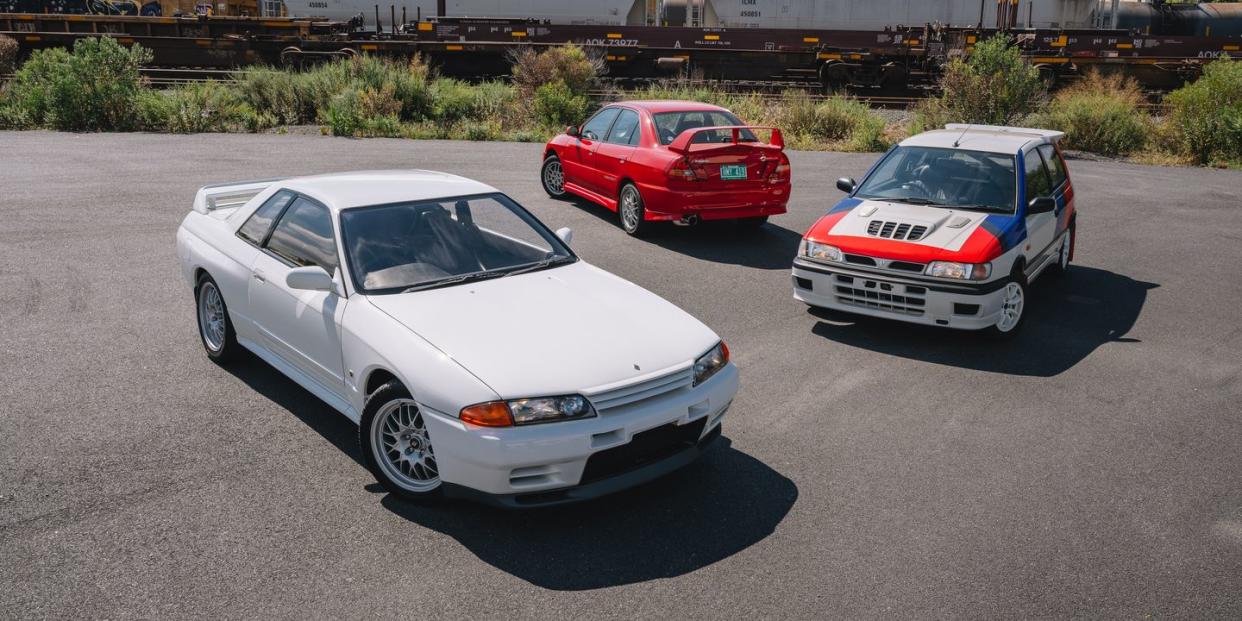
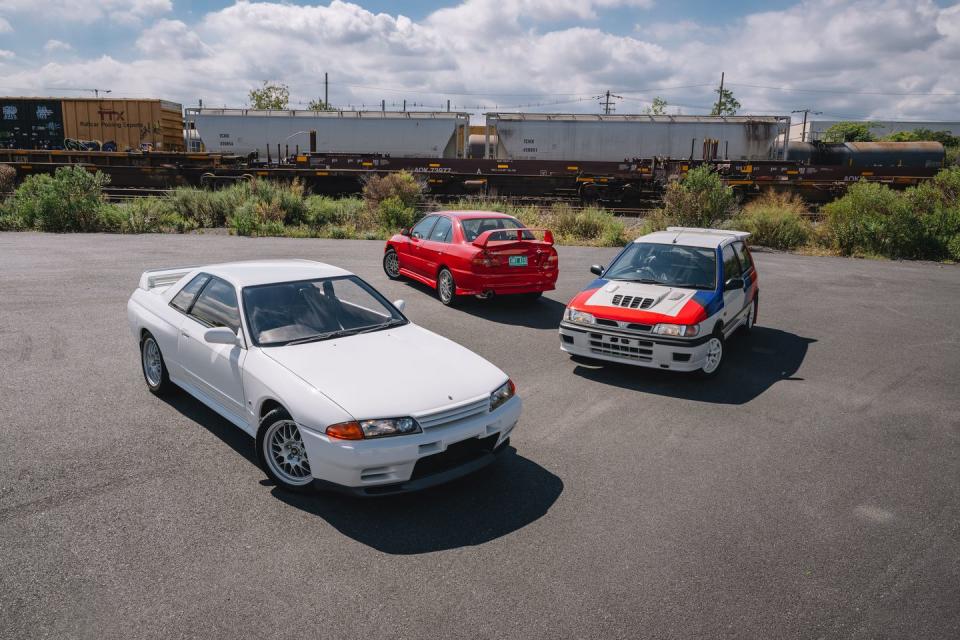
I am behind the perfect steering wheel of a 1994 Nissan Skyline GT-R V-Spec II N1, shifting with my left hand, the twin-turbo RB26 uncommonly smooth, the ride surprisingly firm, and it feels wrong. It feels wrong because I am driving what is very likely the greatest car Japan ever built.
This car is expected to fetch some meaningful slice of a million dollars at auction–if it’s a third or a half it makes no difference to me, I have watched these cars disappear from my realm of affordability long ago–and it is abundantly clear what it was built to do. This R32 GT-R is comfortable, and refined, sure, but it is tuned for high speed. It is a homologation special, a legal necessity more than a consumer product. Nissan built it so that it could hammer around Suzuka, scream over the mountain at Bathurst, face the greatest performance cars in the world on foreign soil and win.
Here I am, driving it at about 25 miles per hour through an industrial development in Secaucus, New Jersey.
I am in a three-car convoy with 12 driven wheels, part of a larger collection of JDM icons going up for sale. There is this 1994 R32 GT-R, there is a 1990 Nissan Pulsar GTi-R Nismo (one of 21 ever built), and there is a 1996 Mitsubishi Lancer Evolution IV GSR. I wanted to make a point, or do something of a retrospective. I wanted to review the glory years of all-wheel-drive performance cars from Japan, cars that we coveted from afar in the United States. These cars were never sold here, and we had to wait 25 years for them to become legal for import. Many have not waited. Some small companies spent millions in an attempt to federalize them. Others have snuck them in, willing to risk their cars getting seized and crushed by the government. I was born in 1989 and for as long as I have been alive, these have been the most desirable cars in America. Nothing else comes close.
That’s not why I wanted to cover them. I wanted to explain that there’s something different about this moment in Japanese cars. These were the first Japanese cars not just to equal what the rest of the world was building; these cars were better. They won. And while I do love them for what they are, I love them more as standard bearers. They are little icons that make a bigger movement easier to understand. Before I get to the big stuff, let’s start small and talk about what these three cars are. Then we can explain why they represented something more.
R32 Nissan GT-R V-Spec II N1: The Car They Called Godzilla
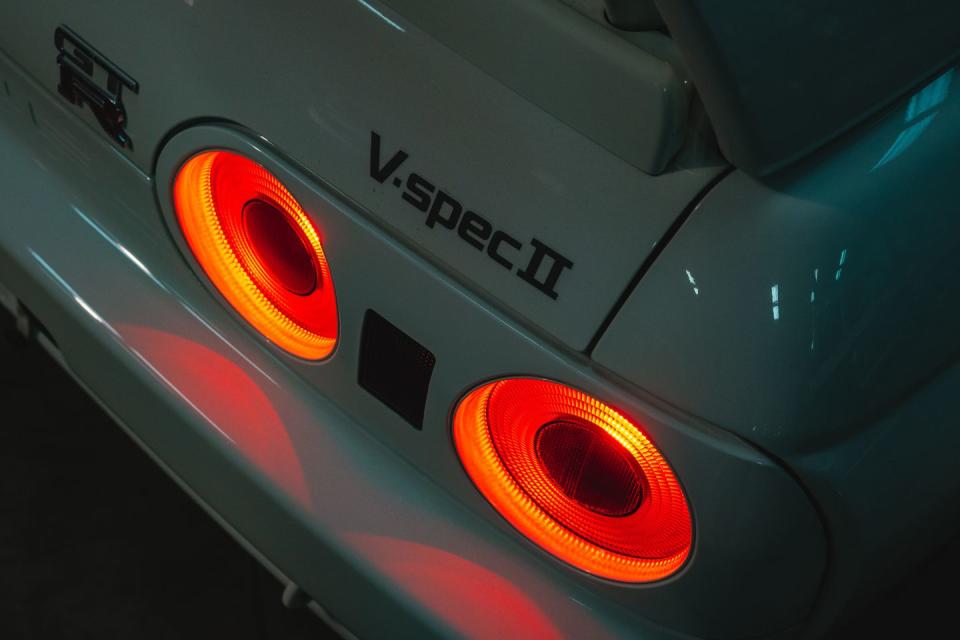
In a way, this car is simply a collection of the best letters and the best numbers.
GT-R: the fastest, most powerful performance car we never got, the tuning icon, the drag legend, the car that conquered Australia. With it you get its vaunted engine, also known by an alphanumeric: RB26DETT. This is the greatest of all Nissan’s performance engines. A straight-six with 2.6 liters of displacement, with individual throttle bodies like you got on the best BMW M cars of the day, only twin-turbocharged as well. This car did what Europe did, and made it better.
R32: the first of the modern GT-Rs, the purest, the first.
V-Spec: the most advanced version of the GT-Rs, with the most tech and the most focus.
N1: the highest tier of this system, the homologation special, the one that made it legal for Japan's N1 racing series. You can buy an R32 and have a great car, even if you just get a two-liter turbo with rear-wheel drive. Only a few will ever know this uppermost level, with every bell and whistle.
I wouldn’t say that it was frustrating to drive, though it’s hard not to describe it as such. Even though the engine is twin-turbocharged, with all of the top tech the Nineties had to offer, it is still very much a Nineties-era turbo product. That is, it is way laggier than you would think. You can lay your right foot flat on the floor at low revs and the car simply does not go anywhere. Only as you get about halfway through the tach do you hear the phwooooot of the turbos spooling up and the car becomes a rocket. The engine is astoundingly smooth, I’ll say again, so it feels completely undramatic running out to its rather lofty redline, somewhere in the neighborhood of 7000 to 8000 rpm. Everything you can do with this car on the street simply feels beneath it. The GT-R has been deified; it drives like it.

It’s hard to go over every spec of this car because each aspect is slightly tuned and modified in some way. Do I devote some words to the lightweight aluminum hood and bumper of the V-Spec cars, or do I spend more time talking about the racing-spec engine block, camshafts, and turbos for the N1 cars? Only 64 cars were built to the exact specification of this particular GT-R, and at a certain point, I find myself feeling more like an encyclopedia than anything else. It takes thousands of words just to go over every detail of the ATTESA system, with all its various developments. As D Sport Magazine writes, "The R33 GT-R’s ATTESA E-TS system added a second control solenoid in line with the primary E-TS solenoid. This Fail-Safe solenoid allows the system to keep the base pressure around 25~30psi on the actuator. While this means that the R33 and R34 GT-Rs always keep about 10 percent of the torque bias to the front wheels, keeping this base pressure in place allows the E-TS system to hit peak pressures significantly quicker for better response. Previously, the time it took for the system to go from zero to 30 psi on the R32 GT-R was about the same time it took for that system to go from 30 psi to the peak of 250 psi. Hence the R33 and R34 GT-R systems gained significant response by maintaining this base pressure." The details on these GT-Rs are endless. How different might an R33 drive with more response but less of a rear-wheel bias? More interesting to me about the R32 GT-R is its history.
Nissan’s run at world-beating all-wheel-drive didn’t start with the GT-R, it started with a concept car in the mid-Eighties, the Nissan MID4. Two versions were designed and built, both running and driving cars, as ready for production as anything else. These were mid-engine sports cars with all-wheel drive, the first iteration of what Nissan called ATTESA. This was an electronically-controlled system, not so different in concept from what Porsche was developing at the same time for the 959. Getting that car onto showroom floors almost destroyed Porsche it was so difficult to refine and execute, and perhaps Nissan was wise not to chase it.
Instead of getting that AWD system as part of an expensive mid-engine sports car, what would have been a Nissan equivalent to the NSX, Nissan applied it to its front-engine GT, the Skyline. Rather than chase off-road rallies as Porsche did, Nissan went touring car racing, and with the Skyline GT-R, it won. The R32 quickly dominated Japan’s domestic touring car series, and it clobbered Australia’s. The way it destroyed everything in its path, they called it Godzilla. Nothing out of Japan had made such a mark at the top level of touring car racing.
Nissan Pulsar GTi-R Nismo: The Rally Legend America Doesn’t Know
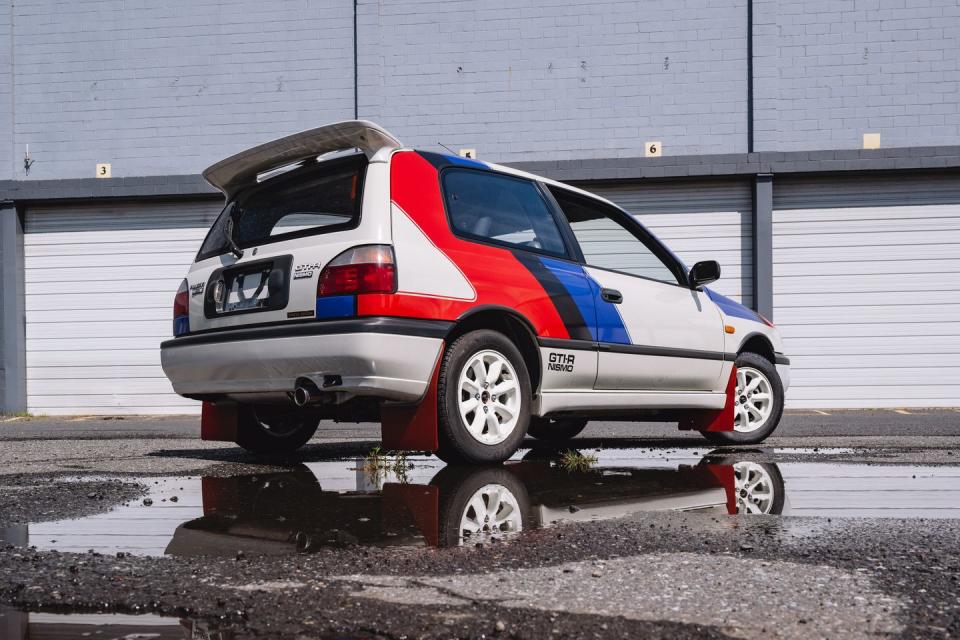
I’ll get out of the way that this was not a legendarily successful race car. It has no world championship titles. It is not heralded as one of the all-time greats. I just saw that I had an opportunity to drive one of these cars and could not pass up the chance.
I am glad I did, because I was not expecting something so raw.
The Pulsar GTi-R, again, is just one car in a rather broad heap of early 1990s rally specials. At the top sits the Lancia Delta Integrale, and everything else sort of filters down from there. It’s easy to lose the Nissan in the mix, and I didn’t think much of it when I fired the thing up. I’d honestly forgotten which Nissan engine was under the well-vented hood.
But from the moment I started the thing, I was shocked. Nissan put something this hardcore on sale?
It looked and felt like a cheap econobox but it vibrated on idle like a Sixties muscle car. Rolling away under a tricky clutch, I thought the car was broken. This is one of 21 Nismo GTi-Rs, built by Nissan’s racing division for competition, and it showed. This car came with a bolt-in cage already installed, a two-way diff at the back that drove like a locker at low speed, thunking and rumbling. I have never driven a homologation special this close to racing spec.
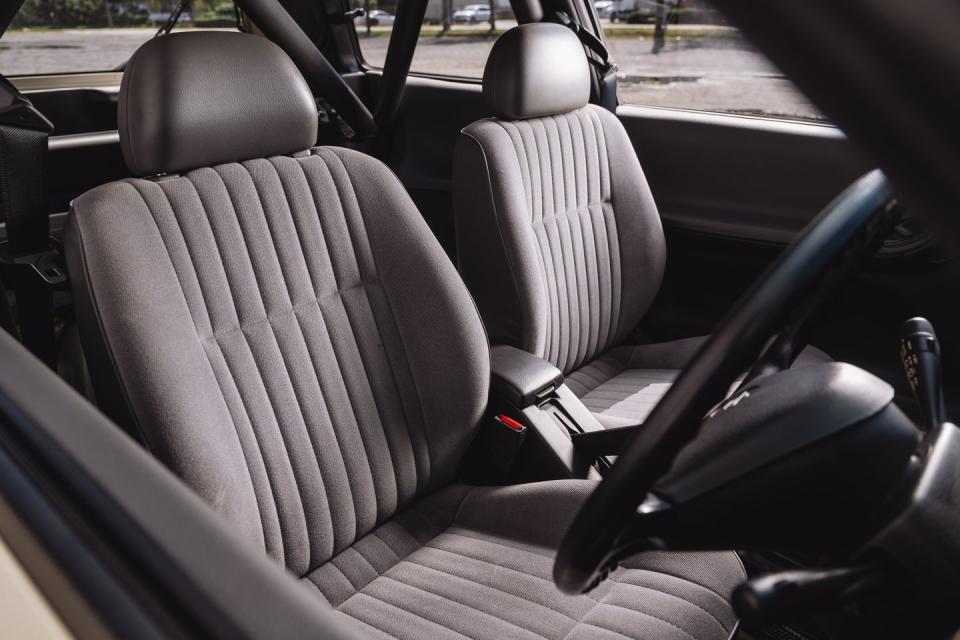
And I have also never driven a car that urged me to drive faster than this thing. And it wasn’t just that it was so unhappy to be driving slow. I mean, it did beat you up in a parking lot and on city streets, but that wasn’t the biggest part of it. On the highway, the right pedal just pulled itself down. The car wanted to run, all the way out to redline, up past and through a thick fog of turbo lag. The engine sounded like it was going to explode at any time, rasping and wheezing. Then I remembered; oh right, this engine probably could explode at any time. It’s an SR20DET, the Silvia engine, the one beloved by drift kids, only with an intercooler sitting atop the cam cover. The R32 was awe-inspiring. The GTi-R was thrilling.
If I am being abundantly honest, this GTi-R Nismo was somewhat unremarkable if you just take a slightly different look at it. Though it is a road-legal car and completely spectacular in that context, after driving it for a short while you hit another point. This is just a rally car. It is a stripped and caged rally car, and drives just like pretty much any other stripped and caged rally car, all of which are also by definition road-legal. If your friend has an ordinary, common Nineties turbo Subaru that they have completely overhauled and run on stage rallies, it’s not all that different from this extraordinary and rare Nissan. It’s just that this is something you could order straight from the factory, put together not by your buddy with a ton of tattoos but by Nissan’s racing division. In fact, this particular GTi-R was owned by the boss of Nismo himself. It’s a special car.
Only Japan in the Eighties and Nineties could produce so many god-tier performance legends that a car this good would get lost in the shuffle.
Mitsubishi Evolution IV GSR: The Untouchable Icon

Of all the cars here, it’s really the Evo that stands as the most internationally successful. The GT-R broke new ground, but the Evo had more championships on the world stage, collecting the World Rally Championship title from 1996 through 1999. Even when the WRC switched to a new top classification, Mitsubishi still won with their old Group A spec car. This is a genuine icon, one of the greats in rallying.
I’d never driven an Evo before this one, only a large number of Subarus, and I’d only ever heard the reputation that Evos are much, much better to drive. I hate to say that I can now agree.
Driving the car is hilarious. Like the Pulsar, you look out at a completely normal dashboard. You’re in a completely normal Nineties family car! Nothing is cheap, so to speak, just plain. Only when you lay into the throttle and wait, wait, wait for the turbo to spool up does it remind you that it is something special. Also when you look in the rear-view mirror and see the high-rise rear spoiler. It was easy to drive slow and easy to drive fast. It was comfortable, not too loud, not too extreme. It was simply good, in a way that felt easy to take advantage of.
It makes sense. We did (eventually) get the Evo here in the United States, so some of its exotic shine has worn off. Only when you’re behind the wheel does the car’s secret character reveal itself.

With the Evo, let’s talk about the greater theme of Japan and all-wheel drive. At its heart, all-wheel drive in anything other than a truck is somewhat superfluous. It’s a gimmick. You don’t need AWD to go fast, and outside of rallying you don’t need it to win races. It’s different; it’s not necessarily better.
But that difference is what made these cars better. In the Eighties, Japan’s economy was experiencing what was one of the most extreme booms of modern history. Only after it crashed in 1991 and 1992 did we get to see it for what it was: A bubble. In this Bubble Era, Japanese carmakers were so flush with cash that they were able to produce cars that were not just equals to what established carmakers from Europe and America; they were able to better them. Beat them. Even little Mitsubishi, a company that made not much beyond economy cars and rough trucks, was able to shut out giants like Ford. Bubble Era Japan chased every niche, giving us boutique mid-engine sports cars at every budget, but it also boosted up every normal machine to top tier status. Mitsubishis became Evos, Nissans became Godzillas.
Legends as these cars are, they are coming up for sale as part of The Cultivated Collector’s JDM collection, appearing on Bring a Trailer soon. These weren't just race cars that could win or lose; they were homologation specials ordinary people could register for the road. Maybe that's part of the magic.
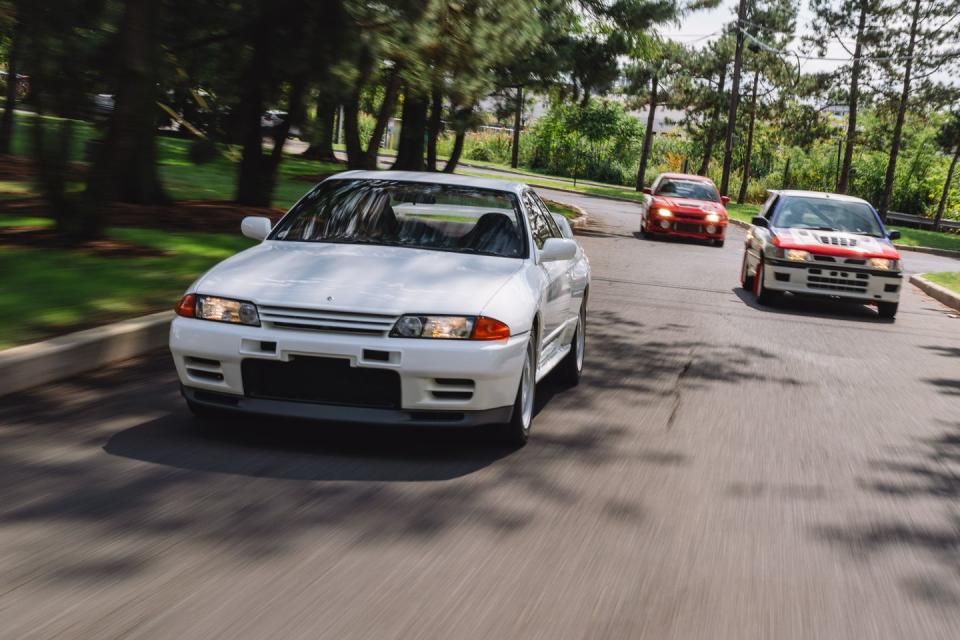
You Might Also Like
